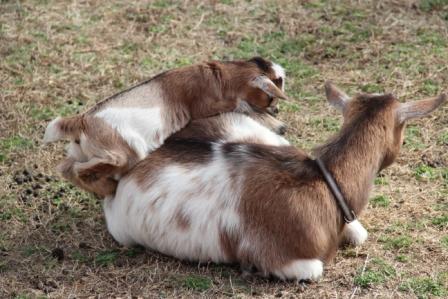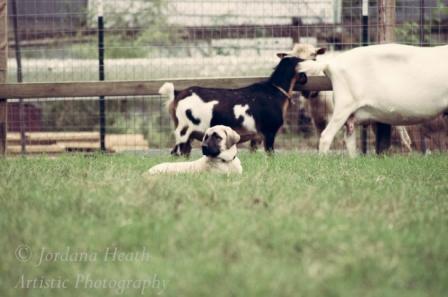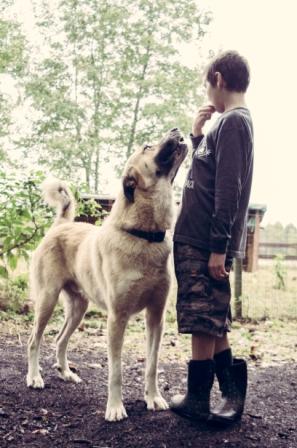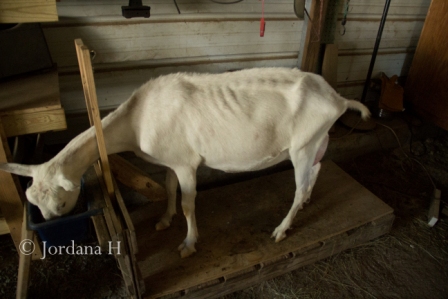I have sucked at blogging in 2015. Now its 2016 and I was cleaning the barn thinking about why. You know why I have been so bad at it? It is because I want to help people and I was writing a series on how to get the best production possible from your goats. The problem is, I was having a hard time writing it and couldn’t finish. You know why? Because I am a natural with goats. Yes, you read that right; I am a natural goat keeper.
I have had goats long enough that people come to me for my “wisdom”. They want a solution to all their problems. I am successful with my herd. As one friend put it somewhat disparingly, “You could get milk from a rock”. You know what? Its true. I seldom have losses, I seldom have problems. Its hard for me to give advice to those that do because all I can think to say is “use common sense”. Do you have any idea how that comes across?! These people are trying so hard! They are reading everything, trying everything, looking for help, yet still having major problems. Its cruel to tell them there is a solution if they would just use “common sense”.
I have helped “fix” herds over and over. I have taught people how to deal with problems, taught how to prevent problems, looked at individual herds and cases and helped get them on the right track to just do it again in the same herd a few months later. These poor people are struggling and I can’t help them because I have not had to struggle to keep my goats alive, to get them to produce well. I just do it. I know what they need.
Not everyone is “natural” with what they take on. Those that are not have to work hard for every ounce of success, whether it be gardening, keeping bees, goats, poultry or anything else. Many give up, they can’t afford to keep having losses. Here is the thing; they may not succeed in one thing, but they may be perfectly suited to another. For instance, while I do great with goats, I suck at bee-keeping. I want to be good at it, but I have a couple of friends that if their worst years were my best year I would be thrilled. I have tried. I have read and studied and asked questions and followed advice, and my mentors say “watch the bees, they will tell you what they need”. Yeah. Right. My bees die. The only reason I have any is because they are fairly decent at surviving on their own. Every year I go back to one hive. And my friend, without even trying, triples hers.
Some people will be able to “learn” to do what they are not natural at. Most will throw in the towel and find something they are better at. The naturals at it will succeed and think its the easiest thing in the world and wonder why so many people don’t “get” it. The fact is, we need each other. We can’t be everything. I am more than happy to raise goats and get my honey from my friend. Frankly, buying it is cheaper than what I am losing trying to do it myself. I accept that I am not a bee-keeper. I am moderately successful with gardens, poultry, and rabbits. I excel at goats. A smart person uses their strengths to their advantage and works with others where they are weak. So, if you are one of those that is a “natural” at something, remember to be understanding to the person that is trying hard but struggling. And if you are the one struggling, remember that the “natural” mentor may not be able to really help you, and its not that they are not trying or don’t want to, they just don’t know how. Maybe you can find a way to help each other where your strengths are instead.













 As I walked among the plants and animals I thought about all the hungry people in just my town alone. I thought about all those struggling, and I thought about the waste in our culture. Our small garden provided more than we actually need so we bought pigs to clean up the extra and still provide yet another form of food for our table. Very little of our land is given to garden, and yet we have enough, if I had help, to feed at least half of the fresh food needs of 3 families, or 75% of the needs of 2 families. If a neighbor were to help with weeding and caring for the garden and plants and preserve some of the food, our garden could easily meet needs beyond our own family. Of course, they won’t. Most of the time I just have people ask for some of the free, effortless food growing out of our ground. Here is the thing, though; no one needs to go hungry! Between the wild plants (often called weeds) and the planned plantings, there is an abundance of food! In our little town there are hungry people. Some of those people are just users, but others are too old or too young or simply have no idea where to start in providing for themselves. I love the community gardens that have begun to crop up in cities and small towns, in country clubs and inner city government housing areas. Sadly, they are in short supply. Many elderly grow flowers instead of vegetables and children are not allowed to get dirty or play with worms in a family garden plot. It wasn’t all that long ago the government told people it was their civic duty to grow a small garden and provide some of their own food needs, but today most people are so busy they just say they couldn’t possibly have time, or the ability, to grow vegetables, yet they take expensive vacations, buy short-life electronics, spend evenings in front of the television.
As I walked among the plants and animals I thought about all the hungry people in just my town alone. I thought about all those struggling, and I thought about the waste in our culture. Our small garden provided more than we actually need so we bought pigs to clean up the extra and still provide yet another form of food for our table. Very little of our land is given to garden, and yet we have enough, if I had help, to feed at least half of the fresh food needs of 3 families, or 75% of the needs of 2 families. If a neighbor were to help with weeding and caring for the garden and plants and preserve some of the food, our garden could easily meet needs beyond our own family. Of course, they won’t. Most of the time I just have people ask for some of the free, effortless food growing out of our ground. Here is the thing, though; no one needs to go hungry! Between the wild plants (often called weeds) and the planned plantings, there is an abundance of food! In our little town there are hungry people. Some of those people are just users, but others are too old or too young or simply have no idea where to start in providing for themselves. I love the community gardens that have begun to crop up in cities and small towns, in country clubs and inner city government housing areas. Sadly, they are in short supply. Many elderly grow flowers instead of vegetables and children are not allowed to get dirty or play with worms in a family garden plot. It wasn’t all that long ago the government told people it was their civic duty to grow a small garden and provide some of their own food needs, but today most people are so busy they just say they couldn’t possibly have time, or the ability, to grow vegetables, yet they take expensive vacations, buy short-life electronics, spend evenings in front of the television.